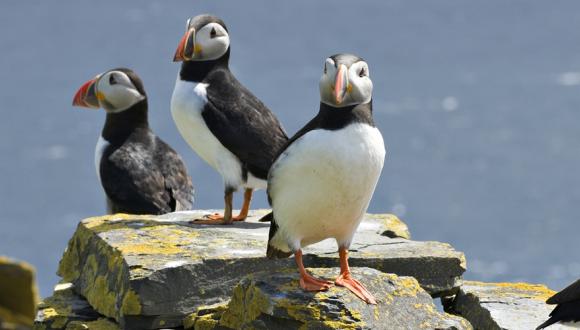Take inspiration from nature this Valentine's Day
14 February
Valentine's Day is here, and in a world of dating apps, social media and swiping left or right; finding - and impressing - the Love of Your Life is at the top of the agenda for many romantics. But if you're looking to go beyond the usual champagne and chocolates, NatureScot suggests looking at nature for inspiration.
If your quest for lifelong love is hitting the buffers, you could take comfort that wildlife find remaining faithful to a single partner equally tricky, with swans, wolves and Eurasian beavers among the rare exceptions. But the natural world still goes all-out, even for a brief romance.
NatureScot Biodiversity Strategy Manager Debbie Bassett said: “We know seeking a partner isn’t unique to humans; it’s everywhere in the natural world - but it’s the lengths that certain species go to that are undeniably impressive”.
In their quest for love, adders literally ‘undress’ and put on a new suit simultaneously. The males shed their skin to reveal a fresh shiny one. Once a lady friend is found, the male will slither over her and flick his tongue over her scales to romance her.
Some wildlife has to make the most of a brief window for romance. The normally solitary and fiercely territorial pine marten has just a few days where the female is receptive to mating. Even if mating is successful, a stressed, ill or hungry pine marten won’t produce young – and a whole year will pass before the time is right to try again.
Doomed romance seems to be the lot of the male dotterel. For this bird - a visitor to Scotland and a member of the plover family – traditional roles are reversed. The female, rather than the male, sports a colourful and attractive plumage during courtship, and the male rears the eggs. But proving that sometimes even your best efforts don’t pay off – while he’s raising the family, she often pairs up with other males to produce more young.
Perhaps a shared hobby – even a pretty weird one – is the key to staying together. Somewhat disgustingly, the sexton beetle uses food - often animal carcasses - as a relationship bonding tool. This beetle, widespread in Britain, can locate a corpse from up to two miles away within an hour of death. A male-female pair bury the body, strip away any fur or feathers and shape the flesh into a compact ball, dousing it with anti-bacterial secretions to slow down decomposition. The female then lays her eggs in the soil nearby, and unusually for insects, these beetles also share parental duties.
Debbie added: “Nature is inspiring and fascinating at Valentine’s Day, and throughout the year. But for wildlife, the quest for love isn’t a game, and it’s not about romance – it’s a strategy for survival. Wildlife will do whatever it takes to help ensure the continuation of its species – whether that’s pairing up for life, or moving from partner to partner. There’s no ‘one size fits all’ when it comes to courtship in nature, and what works best can be very individual to each species”.
So if you don’t happen to fit the traditional mould of ‘one partner for life’ – know that you’re in good company, as far as some of our most fascinating wildlife is concerned.






